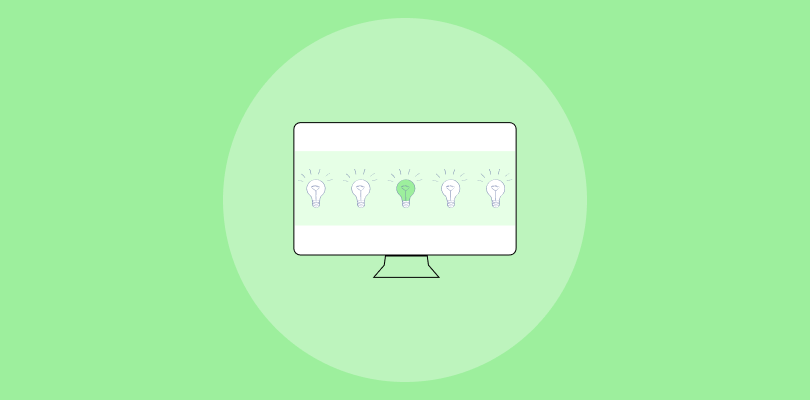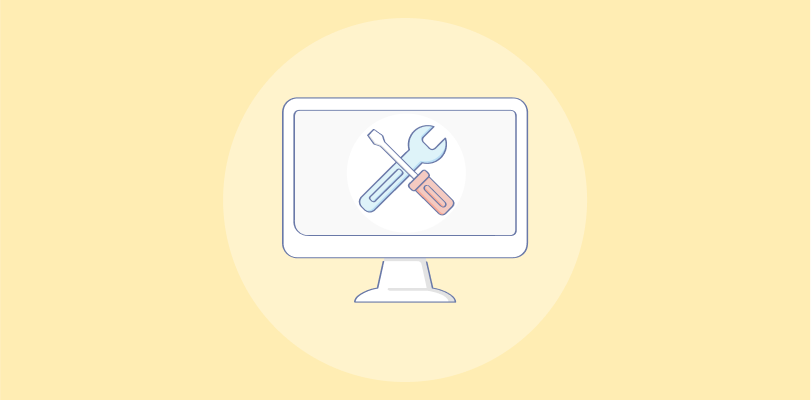Before you even begin speaking, your webinar description is already doing the talking—reflecting your expertise and setting expectations for your audience.
Having been a part of the webinar industry for nearly a decade, I’ve learned that a well-crafted description can be the deciding factor in whether potential attendees click “Join” or move on.
Curious about how to make the description of webinars truly stand out?
Here’s a guide that covers everything you need to know—examples, benefits, and actionable steps to create compelling content that resonates with your audience.
But before that, here’s a quick video to help you get started on live webinars:
What is a Webinar Description?
A webinar description is a short, clear summary of what an online seminar or presentation will be about. It’s designed to give potential attendees an idea of what they will learn or experience if they join.
It usually includes the webinar topic, the main points covered, and any special features like guest speakers or Q&A sessions.
Let’s check a webinar description example. Suppose you’re hosting a webinar on social media marketing. Your description might be:
“Join us for an hour-long session on how to grow your business using social media. We’ll cover tips on content creation, scheduling posts, and engaging with your audience, along with a live Q&A.”
The description can help people decide if the webinar is relevant and worth attending.
How Does a Webinar Description Align With the Topic
A webinar description aligns with the topic by providing clear and concise information that connects directly to the subject matter, engaging the target audience, and setting clear expectations for the event. Here’s how:
- Reflects the Core Theme: The description should summarize the webinar’s main focus, clearly stating what the session will cover. It should align with the topic by emphasizing the key points, questions, or issues the webinar intends to address.
- Defines the Value Proposition: A well-written description explains the benefits attendees will gain from the webinar, such as learning new skills or gaining insights on the topic. It shows the relevance of the content to the audience’s needs.
- Sets Clear Learning Outcomes: By outlining what participants can expect to learn or take away, the description ensures that the topic is framed in a way that highlights specific outcomes, making it easy for potential attendees to see the relevance.
- Targets the Right Audience: The description should connect the topic to the specific interests or pain points of the intended audience, whether it’s beginners looking for an introduction or professionals seeking advanced knowledge.
- Uses Keywords for SEO: A strong description will include topic-related keywords to help attract the right audience through search engines or internal platforms, ensuring it reaches those interested in the subject.
- Calls to Action Aligned with the Topic: The description should prompt viewers to register by connecting the call to action (CTA) with the relevance of the topic. For instance, “Sign up to learn the latest strategies in digital marketing.”
Why Should You Write a Captivating Webinar Description
Writing a captivating webinar description is essential because it serves as the first impression and primary hook to attract your target audience.
Here are a few key reasons why writing a compelling webinar description is important:
- Captures Audience Attention Instantly
A compelling webinar description grabs attention from the start, ensuring that potential attendees are intrigued and want to learn more. By using powerful language or posing a thought-provoking question, your description stands out in a crowded online space.
- Highlights the Value Attendees Will Gain
Focusing on the specific benefits attendees will receive helps them understand why the webinar is worth their time. Whether it’s practical knowledge, expert insights, or solutions to a problem, a clear value proposition encourages people to commit.
- Increases Registrations by Creating Urgency
Creating urgency by mentioning limited spots, exclusive content, or time-sensitive offers compels potential attendees to act quickly. This tactic reduces procrastination and leads to higher registration numbers.
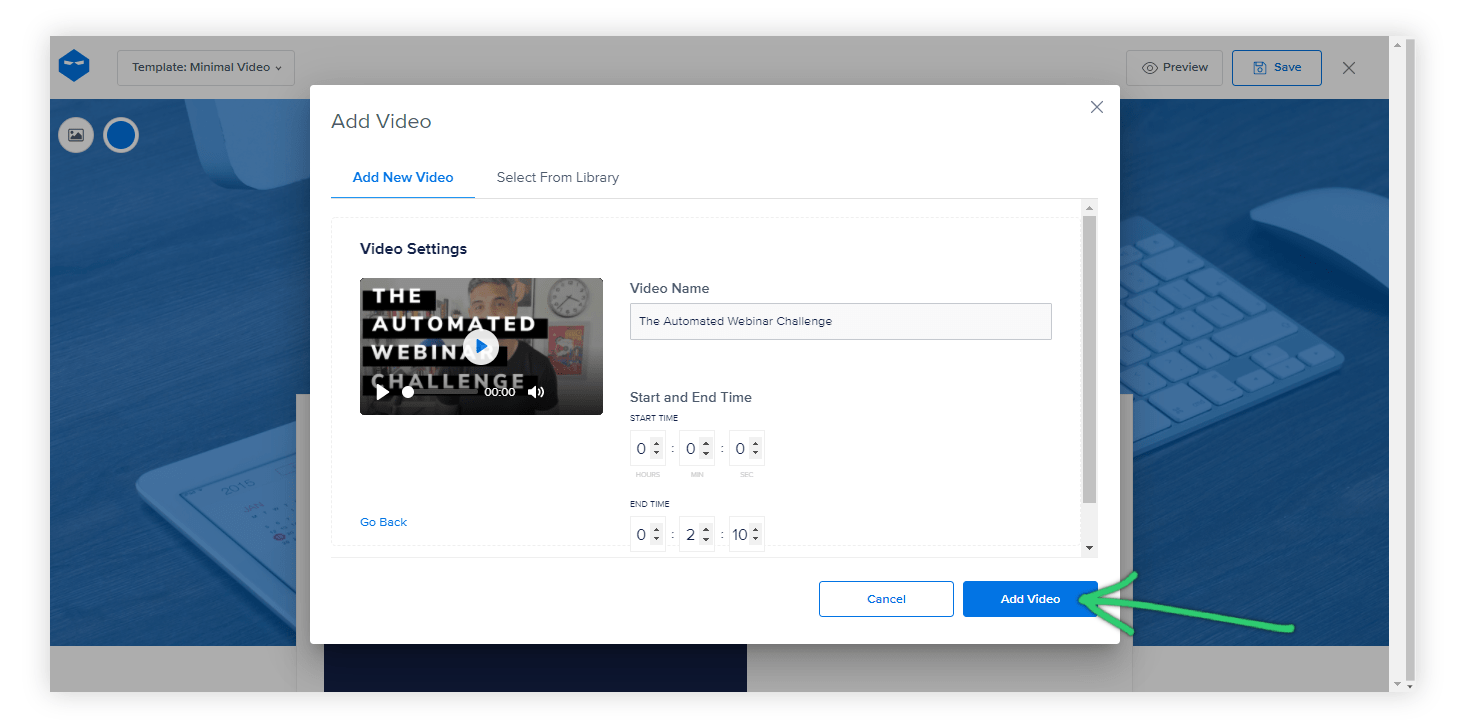
- Builds Anticipation by Offering a Preview of Key Takeaways
Providing a sneak peek into the core topics, guest speakers, or key takeaways builds excitement and anticipation. When attendees know what they will gain, they are more likely to prioritize your event and engage fully.
- Sets Clear Expectations to Build Trust
A transparent description that outlines the webinar’s agenda, format, and duration builds trust by ensuring attendees know what to expect. This clarity reassures them that their time will be well spent, leading to higher attendance and engagement.
- Differentiates Your Webinar with Unique Selling Points
Highlighting what makes your webinar unique—whether it’s an exclusive speaker, cutting-edge insights, or a fresh perspective—helps your event stand out. This differentiation gives potential attendees a reason to choose your webinar over others.
- Boosts Visibility by Using SEO-Friendly Keywords
Including relevant and strategic keywords not only improves the searchability of your webinar but also increases its visibility in online searches. This helps drive organic traffic, ensuring your event reaches the right audience.
- Tailors the Message to Address Audience Needs
Customizing your description to speak directly to your audience’s needs and challenges makes it more relatable and impactful. A personalized message resonates more deeply with potential attendees, making them feel the webinar is designed for them.
- Establishes Credibility by Showcasing Expertise
Including speaker qualifications, past successes, or testimonials builds your authority and credibility. A strong reputation gives potential attendees confidence that they will gain valuable insights by attending your event.
- Drives Registrations with a Clear Call to Action
A well-structured description ends with a clear, action-driven CTA. Phrases like “Register Now” or “Reserve Your Spot” prompt immediate action, making the registration process seamless and encouraging more sign-ups.
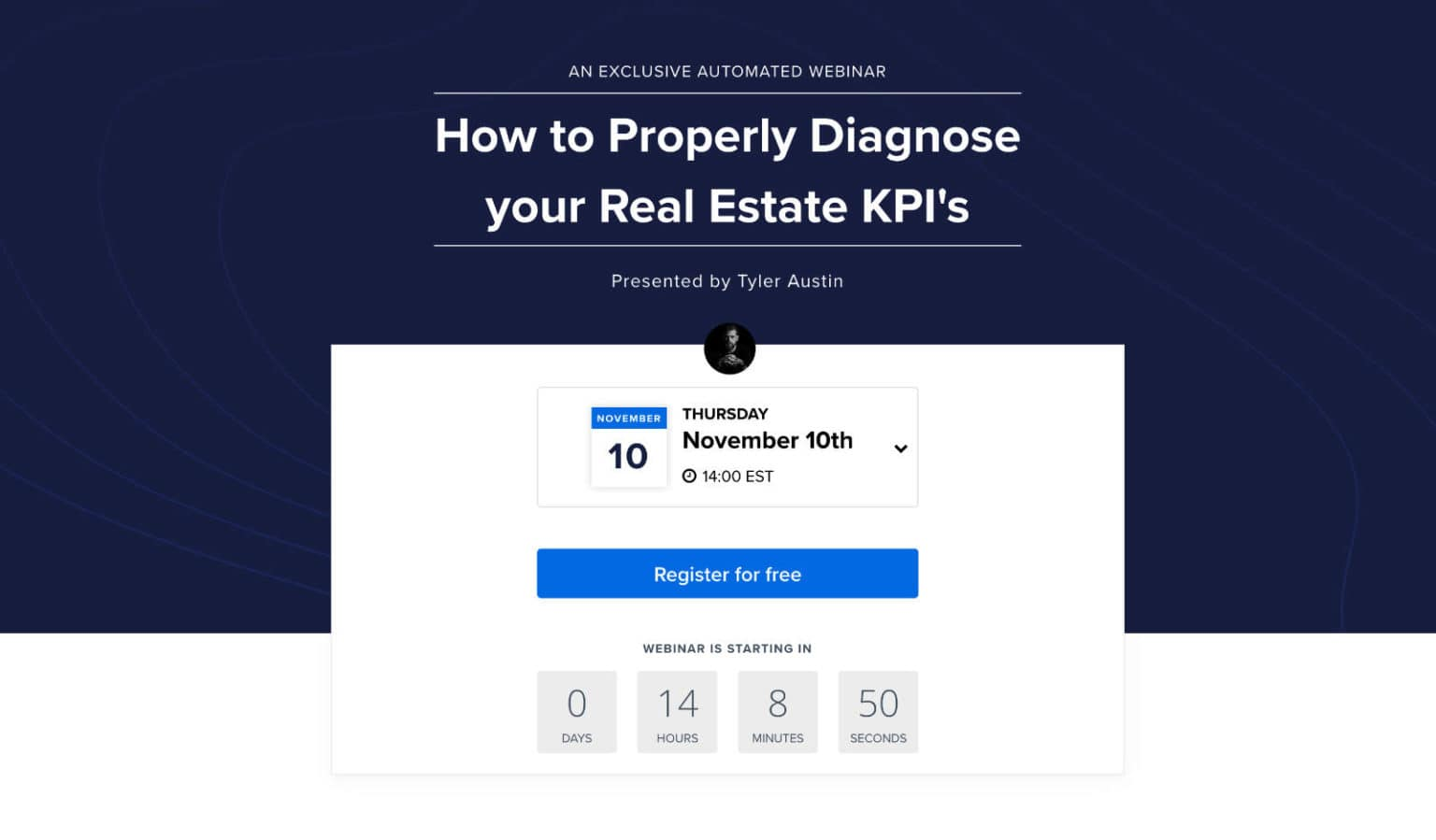
Also Read: 11 Features Every Webinar Software Must Have
How To Write Webinar Descriptions: A Step-by-Step Guide
An effective webinar description is key to attracting the right audience and setting clear expectations. Here’s a step-by-step guide on how to write one:
1. Create a Compelling Title
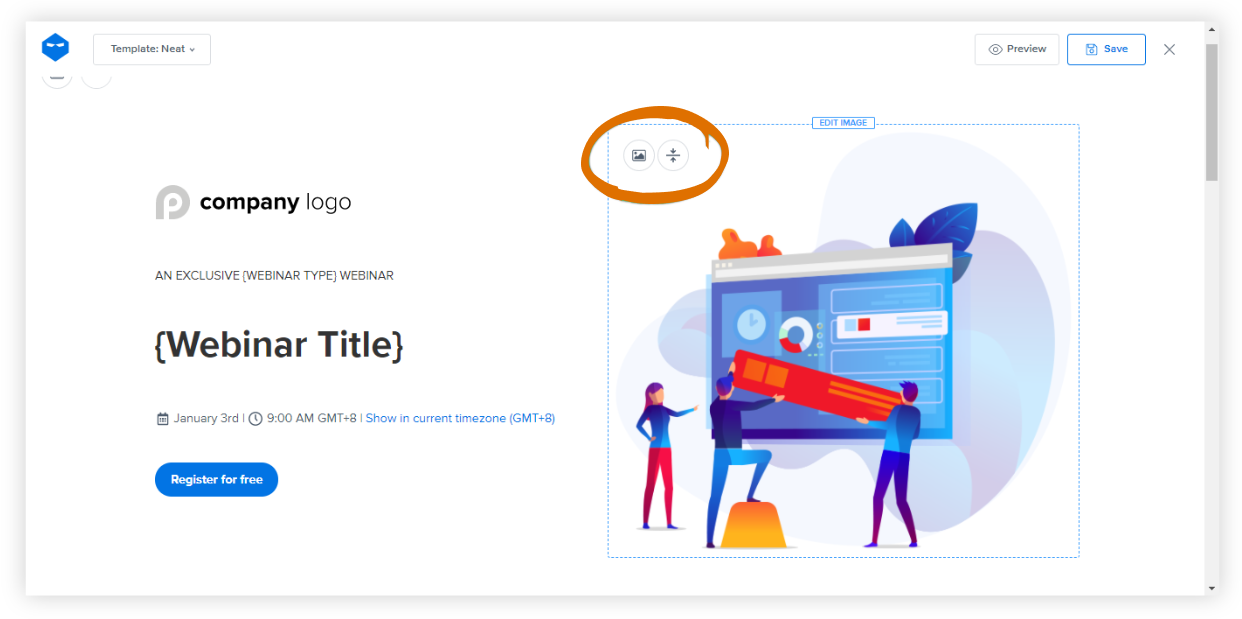
Start with a clear and engaging title that highlights the webinar’s value. It should instantly grab attention.
For example:
“Mastering AI: How to Automate Your Business for Maximum Growth”.
“Unlocking Growth: Proven Strategies to Scale Your Business in 2024”
“Mastering Digital Marketing: How to Maximize ROI With AI-Powered Tools”
“The Future of Remote Work: Trends & Tools You Need to Succeed”
“From Idea to Execution: Building a Winning Product Launch Strategy”
For the purpose of this guide, we will use “Mastering AI: How to Automate Your Business for Maximum Growth”.
2. Introduce the Topic
Provide a brief introduction to the topic, emphasizing its relevance and what attendees will learn. Be concise and direct, focusing on the key takeaways.
For example: “In this webinar, we’ll explore how AI-driven tools can streamline your business processes, from customer service to sales automation.”
3. Highlight the Benefits
Focus on what your audience will gain by attending. List the benefits, rather than just the features, and use bullet points for clarity. For instance:
- Learn how to automate routine tasks.
- Discover top AI tools to drive business efficiency.
- Gain practical tips to implement immediately.
4. Mention the Speaker(s)
Briefly introduce the speaker(s) with their expertise and credentials. This helps build credibility.
For example: “Hosted by John Doe, an AI specialist with over 10 years of experience helping businesses grow through automation.”
5. Add a Call to Action
Encourage potential attendees to sign up, making it clear what action they need to take next.
For Example: “Reserve your spot today and take the first step toward automating your business!”
6. Include Date, Time, and Format
Make sure the logistics (date, time, time zone, and format) are easily visible. This helps attendees plan: “Join us on September 20th at 2 PM (EST) for this live 60-minute webinar.”
7. Optional: Testimonials or Social Proof
If applicable, add a short testimonial or mention how many people have already registered to create urgency or credibility.
Example Webinar Description
| Mastering AI: How to Automate Your Business for Maximum Growth Join us on September 20th at 2 PM (EST) for a free, live, 60-minute webinar on AI-driven business automation. Learn practical tips, discover the best AI tools, and understand how automation can drive significant growth in your business. You’ll walk away with: Hosted by John Doe, an AI specialist with over a decade of experience helping businesses optimize their processes, this webinar is perfect for business owners, managers, and tech enthusiasts. Don’t miss out—reserve your spot today! |
Best Use Cases of Webinar Description
When writing a webinar description, it’s essential to be clear, concise, and compelling. This will give potential attendees a glimpse of what they’ll gain from participating.
Here are some of the best use cases for crafting compelling webinar descriptions:
1. Educational Webinars
When the goal is to teach a specific skill or concept.
Example:
“Join our ‘Mastering SEO in 2024’ webinar to learn the latest trends and techniques for boosting your website’s visibility. Discover actionable strategies from industry experts, designed to help you climb the search engine rankings. Whether you’re a beginner or looking to refine your skills, this session will equip you with the tools you need to succeed.”
2. Product Demo Webinars
When giving a product demo or software demo.
Example:
“Get an exclusive look at [Product Name] in action during our live demo! See how easy it is to streamline your workflow, automate key tasks, and get the most out of your team’s productivity. Watch as we walk you through real-life use cases, and ask questions in real time.”
3. Industry Expert Webinars
When featuring well-known figures in the industry to share insights.
Example:
“Join [Expert Name], a renowned leader in [Industry], for a deep dive into the future of [Topic]. In this exclusive webinar, you’ll gain valuable insights into industry trends, future forecasts, and actionable strategies you can apply to stay ahead of the curve.”
4. Customer Success Stories
When highlighting real-world case studies or success stories.
Example:
“Learn how [Company Name] used our solution to achieve a 40% increase in sales within six months. Hear directly from their leadership team about the challenges they faced, how they overcame them, and how you can apply similar tactics to your business.”
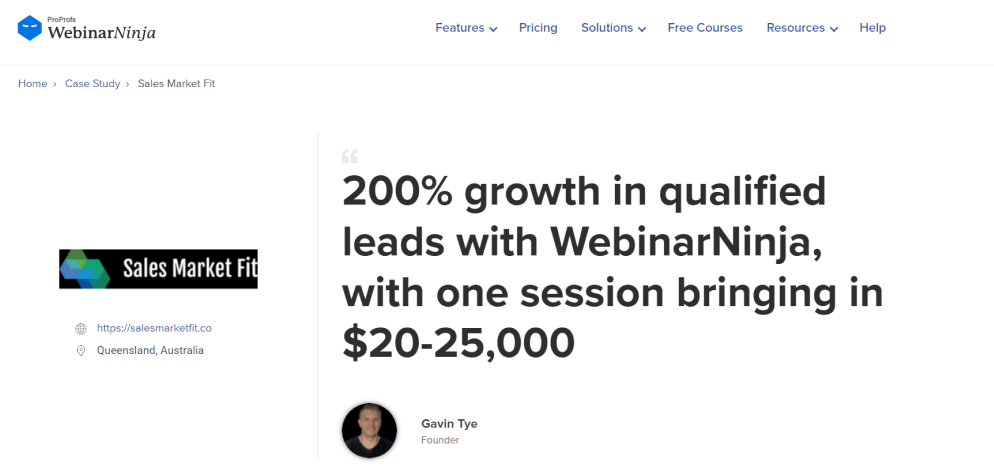
5. Thought Leadership Webinars
When establishing your brand as a leader in the field.
Example:
“Discover the future of digital transformation in our upcoming webinar, ‘Revolutionizing the Tech Industry.’ Our panel of forward-thinking leaders will explore emerging technologies, the impact on global industries, and how businesses can adapt to thrive in the new digital economy.”
6. Onboarding/Training Webinars
When the objective is to train users on a service or product.
Example:
“Welcome to [Product Name]! This onboarding webinar is designed to help you get started quickly and easily. Learn how to set up your account, navigate key features, and explore advanced tips to ensure you’re getting the most out of the platform.”
7. Sales & Marketing Webinars
When your webinar is aimed at generating leads or driving sales.
Example:
“In our upcoming webinar, ‘5 Proven Strategies to Increase Your Sales Funnel,’ we’ll reveal cutting-edge marketing techniques that have been proven to double conversion rates. Learn from industry leaders and walk away with practical steps you can implement immediately.”
8. Panel Discussions
When featuring multiple experts in a discussion format.
Example:
“Join our panel of industry experts for a lively discussion on ‘The Future of Remote Work.’ We’ll tackle the big questions surrounding productivity, workplace culture, and technology, while giving you the chance to participate in an interactive Q&A session.”
Also Read: What Are the Best Webinar Formats to Boost Engagement & Learning?
Tips & Tricks to Write a Compelling Webinar Description
Here are some pro tips and tricks to write a compelling webinar description that would help you connect better with your audience:
1. Start with a Hook That Creates Urgency
Craft an opening line that instantly hooks the reader, such as “Don’t miss this rare chance to…” or “Limited seats for an exclusive webinar on…” This creates a fear of missing out (FOMO) and increases the likelihood of registrations.
2. Use the “Why Now” Formula
Answer the question, “Why should someone attend this webinar right now?” Highlight timely and relevant issues in your industry to make the webinar feel urgent and necessary.
For example, mention how your webinar solves a problem that’s trending or becoming a bigger issue in your field.
3. Include a Sneak Peek of Exclusive Content
Without giving too much away, tease some exclusive, hard-to-find insights or strategies that will be revealed only in the webinar. This adds value and entices your audience.
Use phrases like, “We’ll reveal the secret formula that’s helped XYZ Company triple their revenue in 6 months.”
4. Add a Personalized Element
Use personalized phrases, especially in the body of the description. Something like “This webinar was designed with professionals like you in mind” makes the reader feel that it’s tailored to their specific needs.
5. Leverage Social Proof
Include a short mention of past webinars or successful results if relevant. You could say something like, “Our last webinar helped 500+ businesses improve their conversion rates by 20%.” This establishes credibility and makes it easier for prospects to trust the value of your webinar.
6. Segment Your Audience with Questions
Instead of writing a general description, target your different audience segments by using specific questions, such as: “Are you struggling to increase webinar engagement? Or do you need tips to boost webinar conversions?”
This feels more conversational and resonates with multiple audience groups at once.
7. Highlight Key Takeaways with Action-Oriented Language
Instead of simply listing what will be covered, use action-oriented phrases like “You will learn to…” or “Walk away with…” This makes the benefits more tangible and personal.
8. Keep it Short, But Scannable
Busy professionals don’t have time to read long descriptions. Use bullet points, bold key information, and keep sentences short. A description that is easy to scan will perform better.
9. End with a Persuasive Call-to-Action
Avoid generic CTAs like “Register Now.” Instead, use something more engaging like “Secure your spot and start mastering X today.” Personalizing the CTA boosts conversion rates.
10. Use Storytelling to Humanize the Webinar
Incorporate a short anecdote or story that relates to the content. For instance, “Last year, our team struggled with the same issue you’re facing right now—here’s how we fixed it.” This connects on a more emotional level and helps potential attendees relate to your message.
How to Test and Refine Your Webinar Description
Testing and refining your webinar description is essential to attract the right audience and maximize attendance. Here’s how you can do it effectively:
1. A/B Test Different Versions
Create two or more variations of your webinar description, focusing on elements like the headline, value proposition, and tone. Use A/B testing to see which version resonates more with your target audience. Analyze which version gets more sign-ups or engagement.
2. Incorporate Audience Feedback
If you’ve previously hosted webinars, ask attendees for feedback on the description. Did it meet their expectations? Was it clear and compelling? Use their input to fine-tune future descriptions.
3. Use Clear and Specific Language
Ensure that your description is concise and to the point. Highlight the key benefits and learning outcomes. Test different ways of presenting this information, like bullet points versus paragraphs, to see what works best.
4. Leverage Data Analytics
Tools like heatmaps, click-through rates, and conversion tracking can provide valuable insights. Analyze what part of your description encourages sign-ups and refine the weaker sections.
5. Focus on Action-Oriented Copy
Try adding stronger call-to-action (CTA) phrases, such as “Reserve Your Spot” or “Join Us for Free.” Test different CTAs and see which ones lead to higher conversions.
6. Optimize for SEO
Ensure that your webinar description includes relevant keywords for better visibility. Test different keyword placements to refine the SEO impact over time.
7. Update Based on Webinar Results
After the webinar, review the attendee demographics, engagement, and retention. If the actual audience doesn’t match your expectations, revisit the description to align it with the right audience better.
Also Read: How to Create & Host a Compelling Webinar in 2024
Engage Your Audience Better With Creative Webinar Description
Crafting a creative webinar description is crucial to grabbing attention and boosting engagement. By being clear, concise, and value-driven, you ensure that your audience is enticed to register and participate. You can highlight the key takeaways and create a sense of urgency to improve conversions.
You can also use a good webinar tool like WebinarNinja to help streamline the process. It offers built-in templates and customization options to tailor your descriptions for maximum impact, leading to higher registration and participation rates.
No doubt, delivering well-structured webinar descriptions ultimately sets the tone for a successful event.
Want to host a webinar for free?
Use WebinarNinja to teach, improve marketing, and grow your sales.




